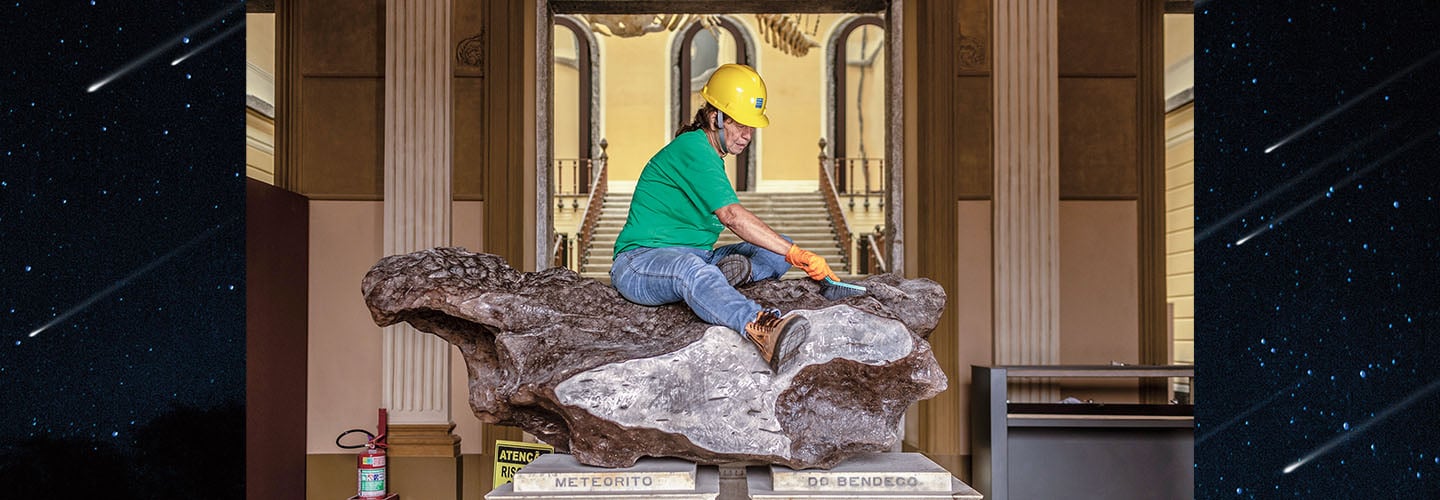Jim McMahon/Mapman®
Imagine sitting in your house when—BOOM! There’s a loud crash nearby. That’s what happened three years ago in Brazil, in a village called Jacilândia. A rock landed near Adriano Gomes’s home. He told reporters that the noise was as loud as a plane. At first, he was afraid to touch the strange object.
His life quickly changed. Gomes learned this wasn’t an ordinary rock. It was a meteorite that had fallen from space. Collectors from faraway cities contacted Gomes. They offered him money, hoping to buy a piece of space.
But then an all-female team of scientists called As Meteoríticas reached out. They wanted the meteorite for a different reason: to study it.
“Each meteorite is a piece of a puzzle that teaches us the history of our solar system,” says Maria Elizabeth Zucolotto. She’s a geologist and a member of As Meteoríticas.
What would Gomes do with his once-in-a-lifetime find?
Imagine you’re sitting in your house. Then BOOM! There’s a loud crash nearby. That’s what happened three years ago in Brazil, in a village called Jacilândia. A rock landed near Adriano Gomes’s home. He told reporters that the noise was as loud as a plane. At first, he was afraid to touch the strange object.
His life soon changed. Gomes learned this wasn’t an ordinary rock. It was a meteorite. It had fallen from space. Collectors from distant cities contacted Gomes. They offered him money. They hoped to buy a piece of space.
But then an all-female team of scientists contacted Gomes. They’re called As Meteoríticas. They wanted the meteorite for another reason: to study it.
“Each meteorite is a piece of a puzzle that teaches us the history of our solar system,” says Maria Elizabeth Zucolotto. She’s a geologist and a member of As Meteoríticas.
What would Gomes do with his once-in-a-lifetime find?

